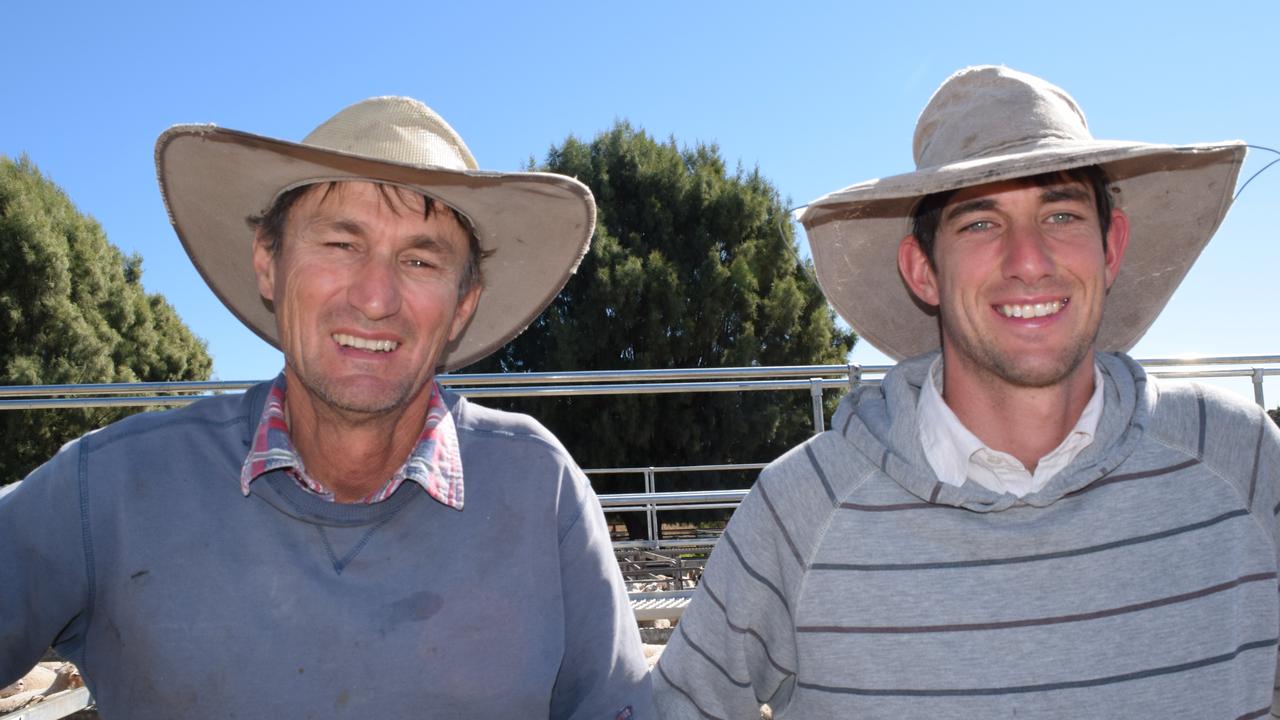Rissmann family reap benefits after implementing new drought hardy sheep breeding practices at farm
A Southern Downs farmer’s move to drought-hardy sheep is paying off after a tough slog battling drought conditions that have gripped the region for many years and pushed some from the land all together.

Warwick
Don't miss out on the headlines from Warwick. Followed categories will be added to My News.
A Southern Downs farm affected by the devastating droughts has begun reaping the benefits of deciding to breed drought-hardy sheep that thrive in harsh conditions.
The Rissmann family battled drought at their Rosedale property, for just under three years from April 2017 until March last year.
To combat the effects of the drought, Alan Rissmann said the family began breeding dual-purpose poll Merinos with the ability to thrive in the harsh environment while producing soft, white and breathable wool able to resist fleece rot and fly strike.
Alan’s father Trevor Rissmann said the decision to focus on the low-maintenance sheep with lustrous white wool was simple.
“Chasing sheep with fat and muscle and plainer-bodied sheep means they don’t need as much feeding in drought, and naturally do better all-round. They are more drought-tolerant,” he said.
“Our goal is not to be big feeders of stock, we want natural durability.”
This year the farm began trialling the early joining of ewe lambs from the typical 12 months, to an eight and six-month shearing plan.
“Ewes coming off shears had a new lease of life and conception rates were higher,” Alan said.
Trevor said there was a 10 per cent increase in lamb survival since switching from a post joining shearing in May to pre-joining in February, adding to their already 30 per cent survival rate increase over the last 10 years.
“Scanning results this year have been absolutely fantastic. In our pregnancy scanning, 56.5 per cent of ewes are having twins, 41 per cent singles and 2.5 per cent are dry,” he said.
“This is a very good percentage as we are after making lambs more profitable.”
For two years during the drought, Trevor said the family also had to handfeed the sheep as they couldn’t be out on the paddock due to having not a single crop.
“After it rained we kept hand feeding for quite a while and let the pastures regenerate for four to six weeks after it rained before finally putting the sheep back out to the paddock,” he said.
He added that there were huge immediate financial benefits in delaying the animals move back to the paddock.
“The pastures have a lot more noticeable bulk, meaning more feed. When everyone else’s paddocks get bare, ours have plenty of colour,” Trevor said.
“This last financial year we certainly recouped anything we would have lost in the previous years during the drought.”
The Rissmann’s hope that their high lamb survival rate and new drought hardy strategies will increase the animals’ saleality and result in more profit for the family.
“Sheep haven’t sold for under a couple hundred for a long time, but nearly everything we’ve been selling recently has sold for unheard of prices,” Trevor said.
“We know we have a good product so hopefully we can get more widely known.”
More Coverage
Originally published as Rissmann family reap benefits after implementing new drought hardy sheep breeding practices at farm








